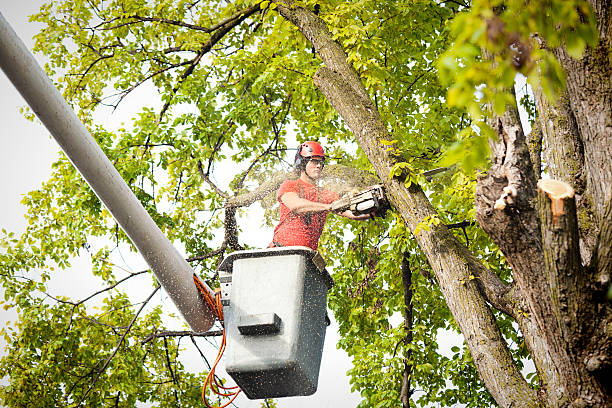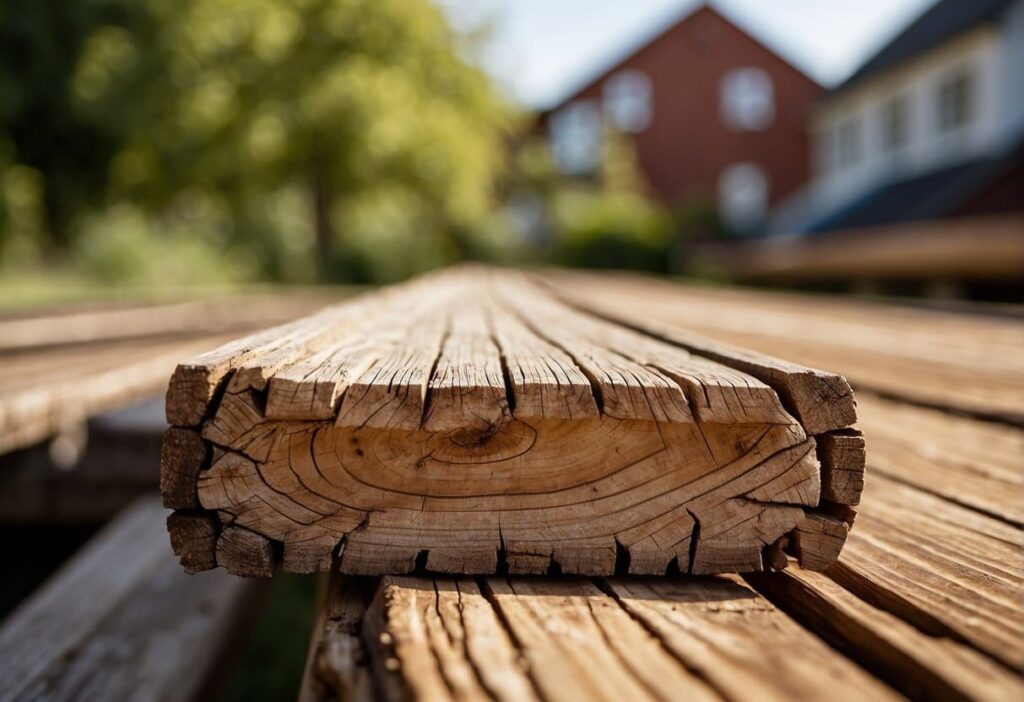Dead oak trees can pose significant safety risks to your property and the people around you. Whether it’s due to disease, storm damage, or natural aging, a dead oak tree should be removed promptly to avoid accidents, falling branches, and potential damage to your home or vehicles. In this article, we’ll guide you through the process of safely removing a dead oak tree, offering expert tips and best practices to ensure a smooth and secure removal process.
Why Dead Oak Trees Need to Be Removed

Table of Contents
Dead oak trees are not just unsightly—they present various hazards. Here are some key reasons why removing a dead oak tree is necessary:
- Safety Concerns: A dead oak tree can become a serious safety hazard. The branches, especially those high up in the canopy, are at risk of falling unexpectedly, potentially causing damage to nearby structures or posing a danger to people and animals.
- Pest Infestation: Dead trees attract pests like termites, beetles, and other wood-boring insects, which can spread to nearby healthy trees or even enter your home.
- Diseases and Decay: A dead oak tree may harbor diseases like oak wilt or root rot, which could spread to other trees on your property. It’s crucial to address the tree’s removal before it affects other healthy plants.
- Aesthetic Appeal: A dead oak can diminish the curb appeal of your property. Removing it enhances the beauty of your landscape and allows space for new growth.
Signs That an Oak Tree is Dead
Before starting the removal process, it’s essential to confirm that your oak tree is indeed dead. While oak trees are known for their longevity, they do succumb to aging and diseases. Here are some signs that indicate your oak tree is dead:
- Lack of Leaves: One of the most noticeable signs of a dead oak tree is the absence of leaves. In autumn, oak trees naturally shed their leaves, but a healthy oak will begin sprouting new ones in the spring. A lack of new growth year after year is a clear indicator that the tree is no longer alive.
- Cracked or Falling Bark: Dead oak trees often experience bark loss or cracking. If the bark is peeling away in large sections, this is a strong indication that the tree is no longer viable.
- Hollow Trunk: A tree that’s hollow on the inside is likely dead or dying. You can check this by tapping the trunk with a mallet or by peering inside, but be cautious as this can sometimes make the tree more unstable.
- Dead Branches: If the majority of the branches are dry, brittle, and break off easily, the tree is likely dead. These branches won’t regrow and could fall at any moment, creating a potential safety hazard.
Tools and Equipment Needed for Removing a Dead Oak Tree

Removing a dead oak tree requires specific tools and equipment to ensure a safe and effective process. Here are the essentials:
- Chainsaw: A chainsaw is the primary tool needed to cut down the tree. Choose a chainsaw that’s powerful enough for the size of the tree, but also lightweight enough for you to handle safely.
- Axe or Hand Saw: For smaller branches or more delicate cuts, an axe or hand saw may be necessary.
- Rope: A strong rope will help guide the tree as it falls. Ropes are also essential for safety if you’re climbing the tree to trim it before the full removal.
- Safety Gear: Protect yourself from falling debris and sharp tools. Wear a helmet, safety goggles, ear protection, gloves, and sturdy boots. If you’re using a chainsaw, chaps are also essential for protecting your legs.
- Ladder: If the tree has branches that are too high to reach from the ground, a sturdy ladder will be necessary to safely access them.
- Truck or Trailer: Once the tree is felled, you’ll need a vehicle to haul away the debris.
Step-by-Step Guide to Removing a Dead Oak Tree
If you’re planning to remove the dead oak tree yourself, follow these step-by-step instructions:
- Assess the Tree’s Stability: Before starting, assess the tree for any external factors, such as nearby power lines or buildings, which could be affected by the tree’s fall. Ensure that the area around the tree is clear of obstacles and people.
- Prepare the Tools and Safety Gear: Set up all necessary tools, ensuring that they are in good working condition. Equip yourself with safety gear before beginning.
- Make the Notch Cut: Start by making a horizontal cut on the side of the tree facing the direction you want the tree to fall. This is the notch cut. Make sure the cut is about one-third of the way through the tree.
- Make the Felling Cut: On the opposite side of the tree, make a horizontal cut slightly above the notch cut. This cut should be level with the horizontal cut of the notch. The tree should begin to lean and fall in the direction of the notch.
- Escape Path: As the tree starts to fall, quickly move to your pre-planned escape path. Ensure you leave the area at a 45-degree angle from the fall line to stay clear of the tree.
- Handling the Tree: Once the tree is on the ground, you can begin to remove the branches. Use the chainsaw to cut them into manageable pieces, then haul away the debris.
When to Hire a Professional for Tree Removal
While removing a dead oak tree can be a DIY project, there are certain cases when it’s best to hire a professional:
- Large Trees: If the oak tree is particularly large or tall, it’s safer to hire a professional. A larger tree requires specialized equipment and expertise to remove safely.
- Proximity to Structures: If the tree is located near buildings, power lines, or other structures, professional tree removal services can ensure that the tree falls in a controlled manner, avoiding potential damage.
- Lack of Experience: If you’re not confident in your ability to safely remove a tree, it’s better to call in professionals. Tree removal can be dangerous, and it’s important to know your limits.
What to Do with the Wood After Removal

Once the dead oak tree is removed, you’ll need to decide what to do with the wood. Here are some ideas:
- Firewood: Oak wood is dense and burns slowly, making it excellent firewood. You can cut it into logs and use it in your fireplace or outdoor fire pit.
- Mulch: The bark and smaller branches can be chipped into mulch for your garden. It’s an environmentally friendly way to reuse the tree.
- Furniture or Woodworking Projects: Oak wood is durable and attractive, making it a popular choice for woodworking projects. You can repurpose the wood for furniture, shelving, or even artistic projects.
- Disposal: If you don’t have a use for the wood, many tree removal companies offer wood disposal services. Alternatively, you can contact your local landfill or recycling center for disposal.
Conclusion
Removing a dead oak tree is an essential part of tree care, as it helps ensure the safety of your property and the health of your surrounding trees. Whether you choose to tackle the job yourself or hire a professional, always prioritize safety and follow the proper procedures to handle the tree. If you’re in need of expert tree removal services, visit Garden Loom for more information.
By addressing a dead oak tree promptly, you can prevent further damage and enjoy a safer, more beautiful landscape.
